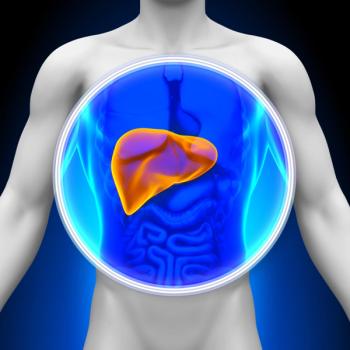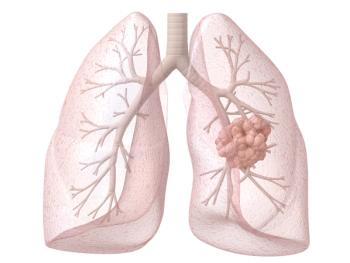
- ONCOLOGY Vol 12 No 5
- Volume 12
- Issue 5
AIDS Among Persons Age ≥ 50 Years—United States, 1991-1996
Early in the human immunodeficiency virus (HIV) epidemic, infection occurred disproportionately among older persons as a result of transmission through receipt of contaminated blood or blood products. Through 1989, receipt of contaminated
Early in the human immunodeficiency virus (HIV) epidemic, infection occurred disproportionately among older persons as a result of transmission through receipt of contaminated blood or blood products. Through 1989, receipt of contaminated blood or blood products accounted for only 1% of cases among persons age 13 to 49 years; in comparison, this risk factor accounted for 6%, 28%, and 64% of cases among persons age 50 to 59 years, 60 to 69 years, and ³ 70 years, respectively. Because of implementation of voluntary donor deferral and routine screening of blood donations in 1985, the number and proportion of acquired immunodeficiency syndrome (AIDS) cases associated with this risk factor decreased among persons age ³ 50 years. However, among persons age ³ 50 years, the number and proportion with AIDS associated with other modes of exposure increased.
This report describes the characteristics of persons age ³ 50 years with AIDS reported during 1996 and presents trends in the incidence of AIDS-opportunistic illnesses (AIDS-OIs) diagnosed during 1991-1996 by mode of HIV exposure for persons age ³ 50 years. The findings indicate that, even though the incidence of AIDS-OIs during 1996 was higher among persons 13 to 49 years old (89%), the proportion of AIDS-OIs accounted for by those age ³ 50 years (11%) was substantial.
For persons with AIDS reported in 1996, the analysis included only cases reported during January 1 to December 31, 1996. Trends in AIDS incidence were based on cumulative AIDS cases among persons age ³ 13 years reported to the Centers for Disease Control (CDC) through June 1997 from the 50 states, the District of Columbia, and the US territories and were analyzed by sex, age, race/ethnicity, mode of exposure, and year of AIDS diagnosis.
Estimates were adjusted for delays in reporting and for the anticipated reclassification of cases initially reported without an HIV risk/exposure. To adjust for the 1993 expansion of the AIDS reporting criteria,a estimates of the incidence of AIDS-OIs were calculated from the sum of cases reported with an AIDS-OI and cases with estimated dates of diagnosis of an AIDS-OI that were reported based only on immunologic criteria. AIDS-OI incidence was estimated quarterly through December 1996 (the most recent annual period for which reliable estimates were available). To calculate annual AIDS incidence rates, mid-year US population estimates were used based on decennial census data.
Reported AIDS Cases Among Persons Age ³ 50 Years, 1996
In 1996, of 68,473 persons age ³ 13 years reported with AIDS, 7,459 (11%) were ³ 50 years old (Table 1); this proportion has remained stable since 1991. Of those ³ 50 years old, 48% were age 50 to 54 years, 26% were age 55 to 59 years, 14% were age 60 to 64 years, and 12% were ³ 65 years old.
Males accounted for 84% of cases, and blacks accounted for the highest proportion (43%) by race/ethnicity. Although men who have sex with men (MSM) accounted for the highest proportion of cases by exposure category (36%), compared with persons age 13 to 49 years, a higher proportion of cases among persons age ³ 50 years were reported without risk information (26%) (Table 1). For both age groups, the highest proportions of cases were in the South (35% and 37%, respectively) and Northeast (32% and 30%, respectively).b
In 1996, persons age ³ 50 years were more likely than those age 13 to 49 years to be reported with an AIDS-OI (eg, wasting syndrome [7% vs 4%]c and HIV encephalopathy [3% vs 1%])c than to be reported with severe immunosuppression and without an AIDS-OI (53% vs 58%)c. In addition, persons age ³ 50 years were more likely to have died within 1 month of their AIDS diagnosis (13% vs 6%)c, suggesting late diagnosis of HIV infection.
Trends in AIDS-OI Incidence, 1991-1996
From 1991 to 1996, the proportionate increase in incident cases of AIDS-OIs was greater among persons age ³ 50 years (22%; from 5,260 cases to 6,400 cases)d than among persons age 13 to 49 years (9%; from 46,000 cases to 50,300 cases). From 1991 to 1996, among men age ³ 50 years, the number of incident cases of AIDS-OIs among MSM remained stable (2,900 cases each for 1991 and 1996), while incident cases among men whose risk was heterosexual contact increased 94% (from 360 cases to 700 cases) and incident cases among men reporting injecting-drug use (IDU) increased 53% (from 850 cases to 1,300 cases). Among male recipients of contaminated blood or blood products, incident cases of AIDS-OIs decreased 48% (from 250 cases to 130 cases). Among women age ³ 50 years, cases attributed to heterosexual contact and IDU increased 106% (from 340 cases to 700 cases) and 75% (from 160 cases to 280 cases), respectively, while cases among recipients of contaminated blood or blood products decreased 33% (from 120 cases to 80 cases).
In both 1991 and 1996, the rate of AIDS-OIs was higher for persons age 13 to 49 years than for persons age ³ 50 years; rates among men in both age groups were higher than among women. The rate ratios of AIDS-OIs for 1996 and 1991 were similar for both age groups of men (1.1, 1.0) and the same for both age groups of women (1.6).
Editorial Note from the CDC
Even though the incidence of AIDS-OIs during 1996 was higher among persons age 13 to 49 years, the proportion accounted for by persons age ³ 50 years (11%) was substantial. The findings in this report suggest that persons ³ 50 years old may not be promptly tested for HIV infection following the onset of HIV-related illnesses. Specifically, the finding that a higher proportion of persons age ³ 50 years was reported with an AIDS-OI and died within 1 month of AIDS diagnosis suggests that persons age ³ 50 years had AIDS diagnosed later during the course of HIV infection than persons age 13 to 49 years.
Although older HIV-infected patients have a shorter observed AIDS-free interval and shorter survival period than younger HIV-infected patients, one reason for later diagnosis among persons age ³ 50 years is that physicians may be less likely to consider HIV infection among this group. This may result in missed opportunities for timely use of OI prophylaxis or antiretroviral therapies to prevent progression of disease. For example, AIDS-OIs that occur commonly among persons age ³ 50 years (eg, HIV encephalopathy and wasting syndrome) mimic other diseases associated with aging (eg, Alzheimer's disease, depression, and malignancies). In addition, in 1996, a survey of primary-care physicians reported that they were less likely to discuss symptoms suggestive of HIV infection or to counsel older patients for HIV testing than their younger patients. To increase opportunities for HIV testing of US persons age ³ 50 years, health-care providers should be encouraged to discuss risk factors, obtain sexual and drug histories for patients, and consider HIV infection in the differential diagnosis of clinical illnesses that may represent HIV infection in this age group.
Persons age ³ 50 years also may not be promptly tested for HIV infection because they may not perceive themselves to be at risk for HIV infection. AIDS surveillance data indicate that higher proportions of persons age ³ 50 years with cases of AIDS are reported without an identified risk factor. In 1994, the prevalence of reported condom use was lower among sexually active persons age ³ 50 years who engaged in high-risk behaviors, and a higher proportion of these persons had never been tested for HIV, compared with younger persons who engaged in the same behaviors. During June 1990-October 1994, a study in 12 state and local health department clinics indicated that older women with heterosexually acquired AIDS were less likely than younger women to have used a condom before their HIV diagnosis and were less likely to have been tested for HIV before being hospitalized with an AIDS-OI.
Because of the frequently long incubation period from HIV infection to AIDS diagnosis, many persons who were diagnosed with AIDS at age ³ 50 years were probably infected as younger adults; therefore, prevention efforts also must be directed at adults who engage in high-risk sexual and drug-use behaviors. In addition, because of the impact of recent advances in treatment on AIDS incidence, the AIDS surveillance data in this report may underestimate the current impact of the HIV epidemic both in persons in this age group and younger persons. Therefore, surveillance for HIV infection and AIDS is important for monitoring HIV transmissionparticularly among persons age ³ 50 yearsand for evaluating the effectiveness of prevention programs. The Centers for Disease Control supports HIV surveillance in 31 states and is developing technical guidance to assist all states and territories in conducting HIV and AIDS case surveillance.
Adapted from the Morbidity and Mortality Weekly Report, vol 47, no. 2, 1998.
Articles in this issue
over 27 years ago
Resource Guide for Cancer Patients and Their Families Releasedover 27 years ago
Clinical Pathway for Pain Management Releasedover 27 years ago
New Publications About Bone Marrow Transplant Available for Patientsover 27 years ago
Herpes Simplex Virus Investigated for Treatment of Brain Tumorsover 27 years ago
Keys to Success of BMT Programs in Managed Care EraNewsletter
Stay up to date on recent advances in the multidisciplinary approach to cancer.
































































































